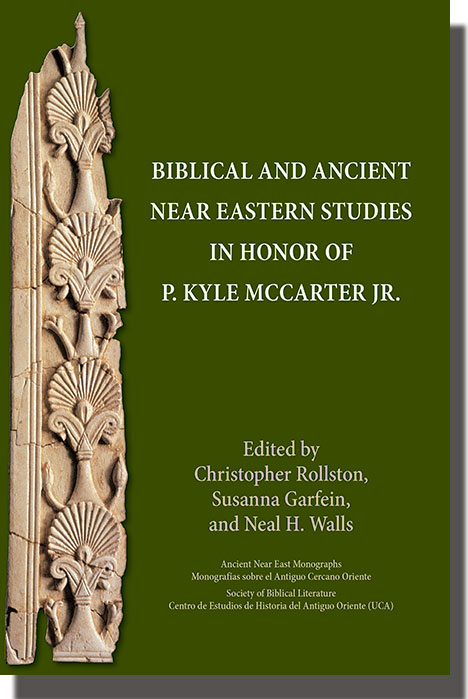This collection of thirty-one essays by colleagues, students, and friends of P. Kyle McCarter Jr. covers a range of topics of interest to McCarter. Essays approach the Hebrew Bible, Dead Sea Scrolls, and the Septuagint using various methods, including philology, narrative criticism, and political theory. Contributions on epigraphy cover a range of inscriptions, including Phoenician, Aramaic, and Ugaritic. A final section on archaeology covers sites, architecture, and artifacts. Contributors include Adam L. Bean, Joel S. Burnett, Aaron Demsky, Heath D. Dewrell, F. W. Dobbs-Allsopp, Daniel E. Fleming, Erin E. Fleming, Pamela Gaber, Yosef Garfinkel, Maria Giulia Amadasi Guzzo, Jo Ann Hackett, Baruch Halpern, Ronald Hendel, John Huehnergard, Yoo-ki Kim, Andrew Knapp, André Lemaire, Theodore J. Lewis, Steven L. McKenzie, Christopher A. Rollston, Jonathan Rosenbaum, Joe D. Seger, Hershel Shanks, Mark S. Smith, Ron E. Tappy, John Tracy Thames Jr., Eugene Ulrich, James C. VanderKam, Erin Guinn Villareal, Roger D. Woodard, and K. Lawson Younger Jr.
Christopher A. Rollston is Professor of Northwest Semitic Languages and Literatures at George Washington University and Chair of the Department of Classical and Near Eastern Languages and Civilizations there.
Susanna Garfein is Director of Leadership Engagement at The Associated: Jewish Community Federation of Baltimore.
Neal H. Walls is Associate Professor of Old Testament Interpretation at Wake Forest University School of Divinity.

















